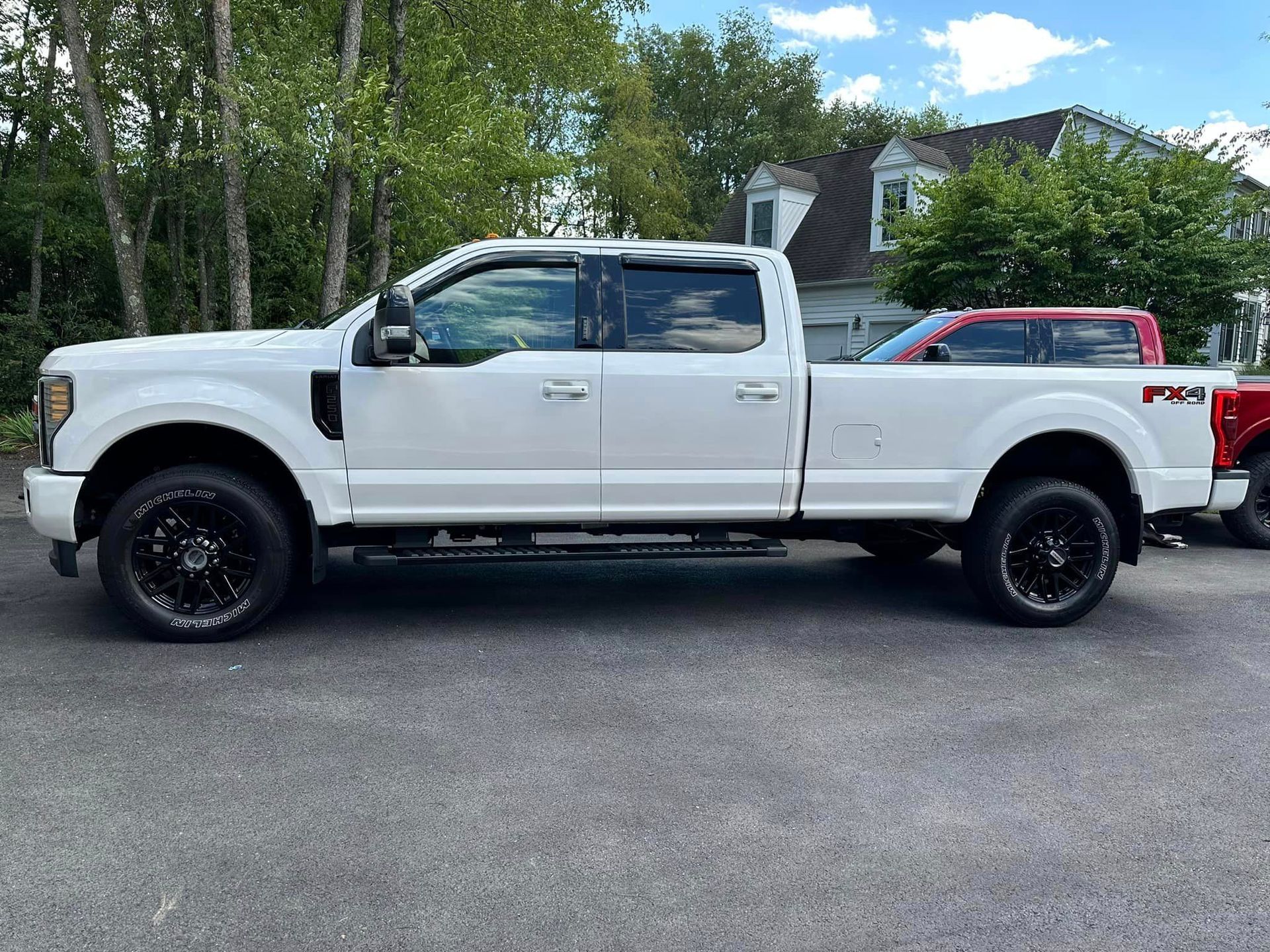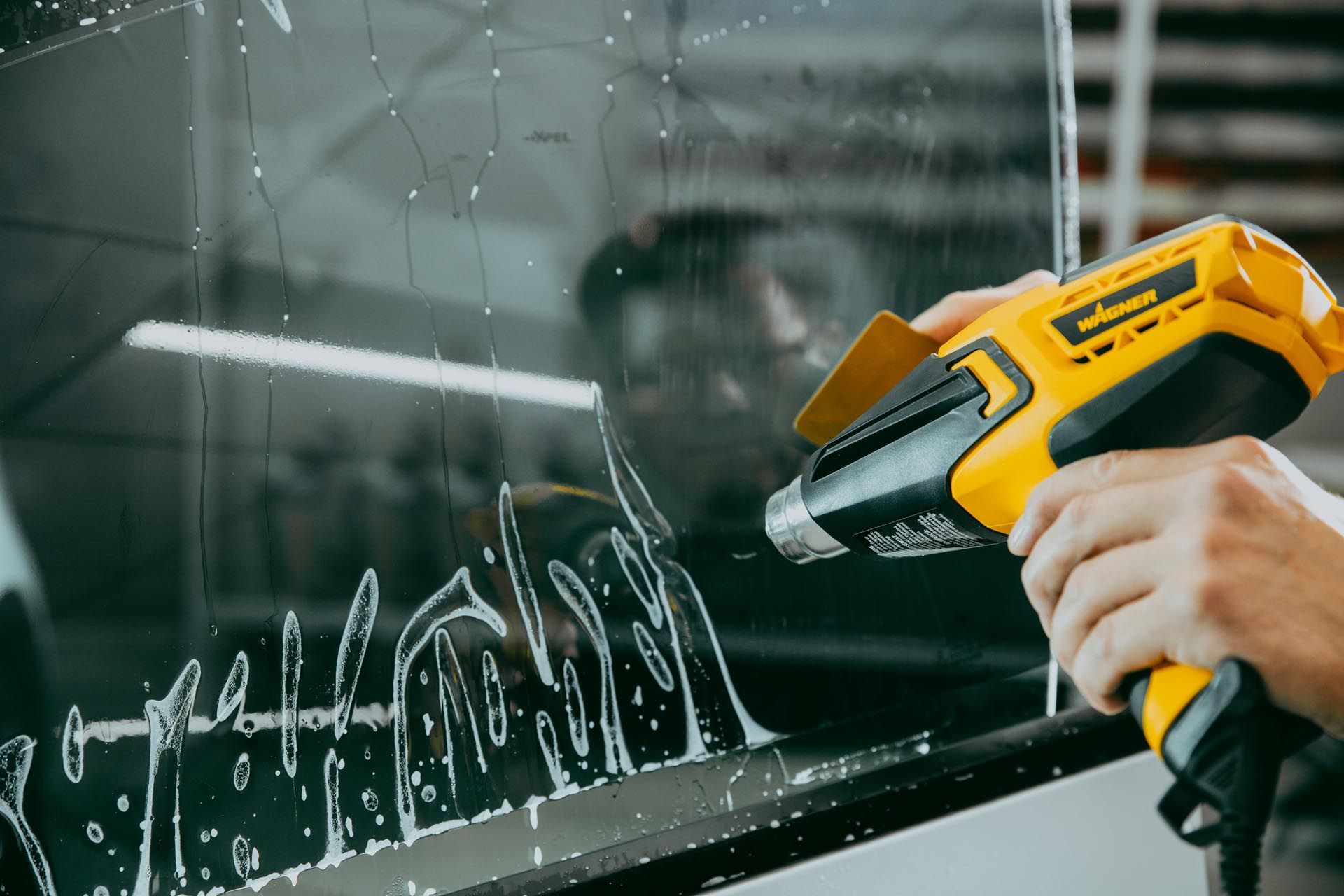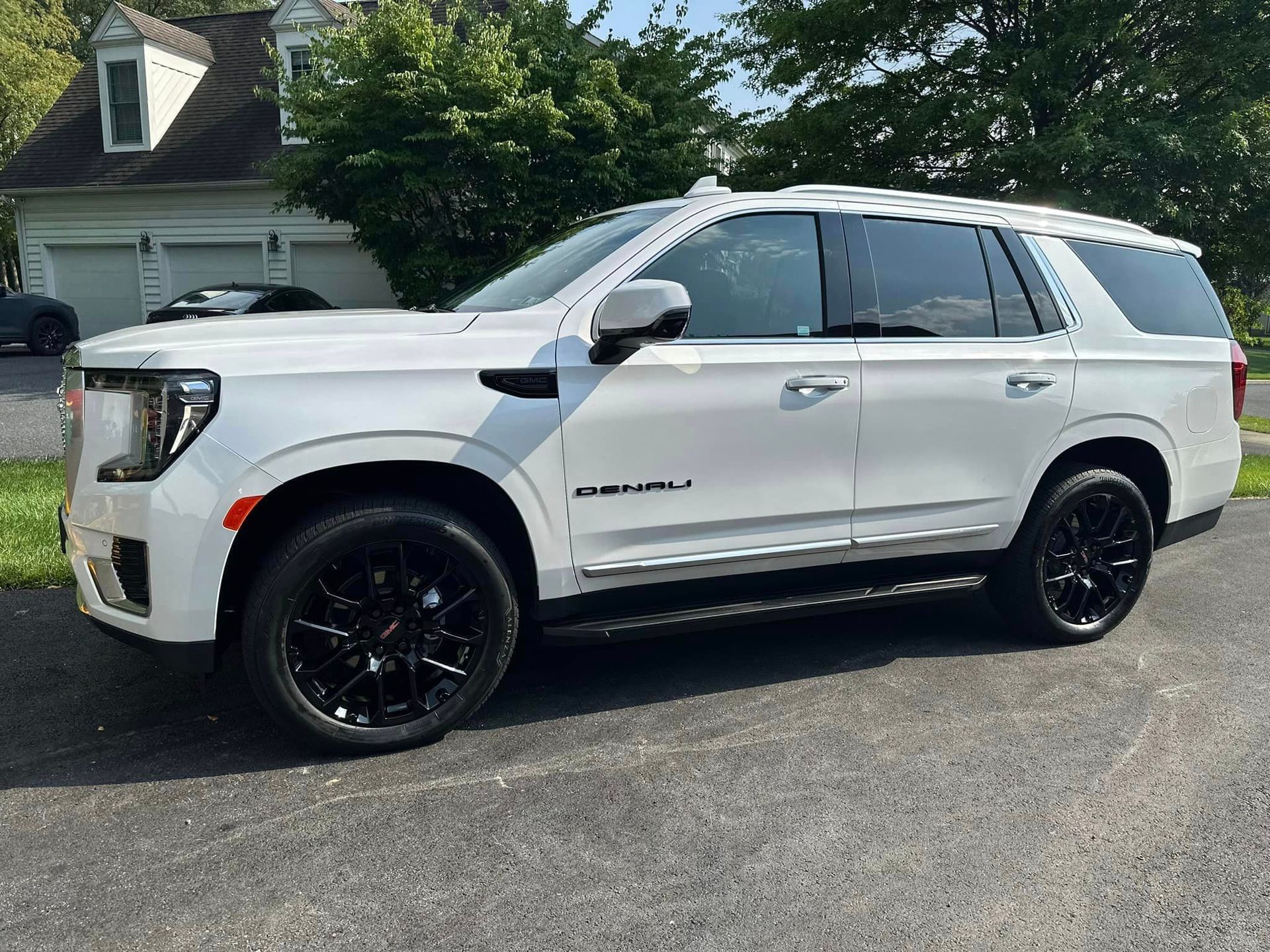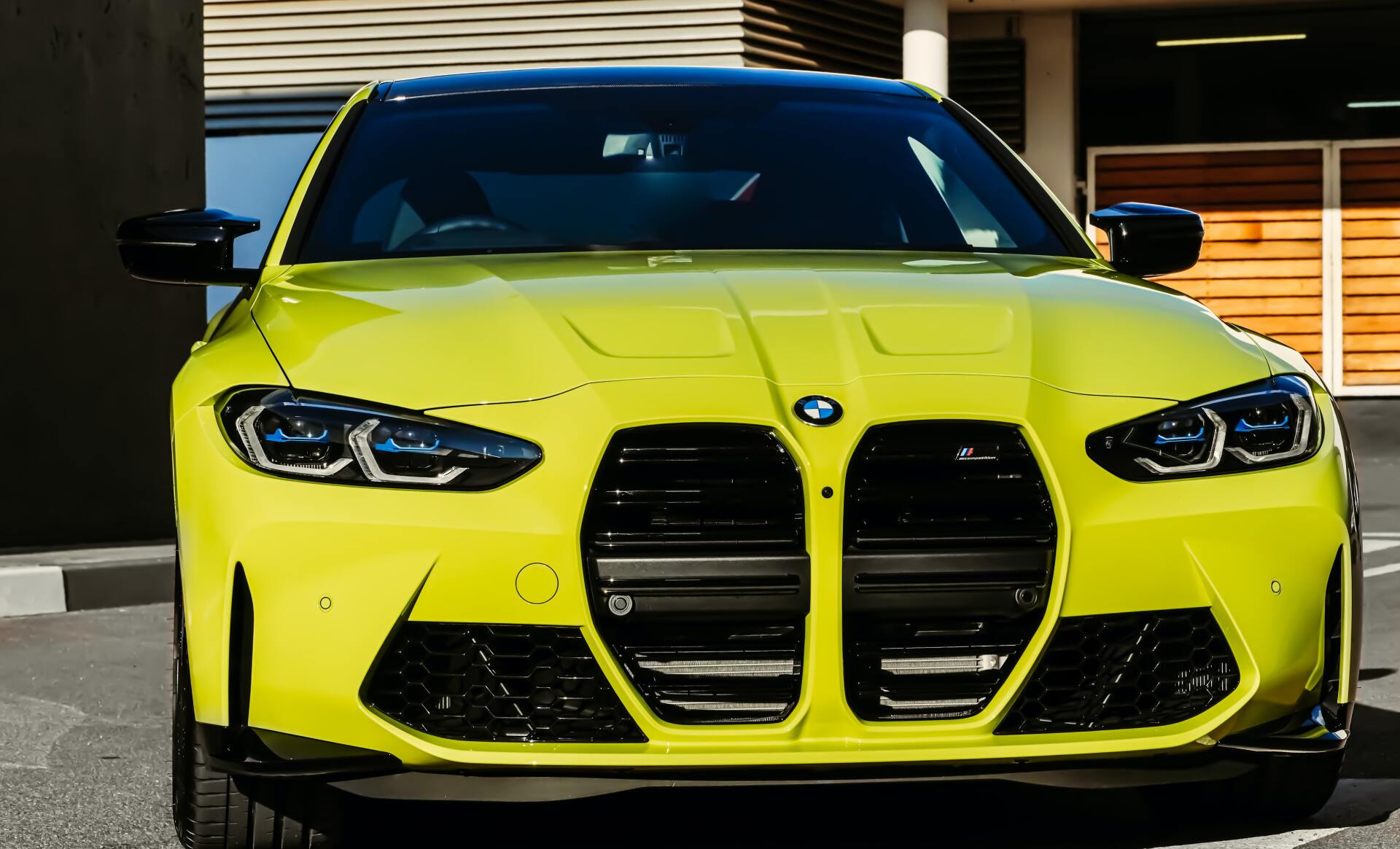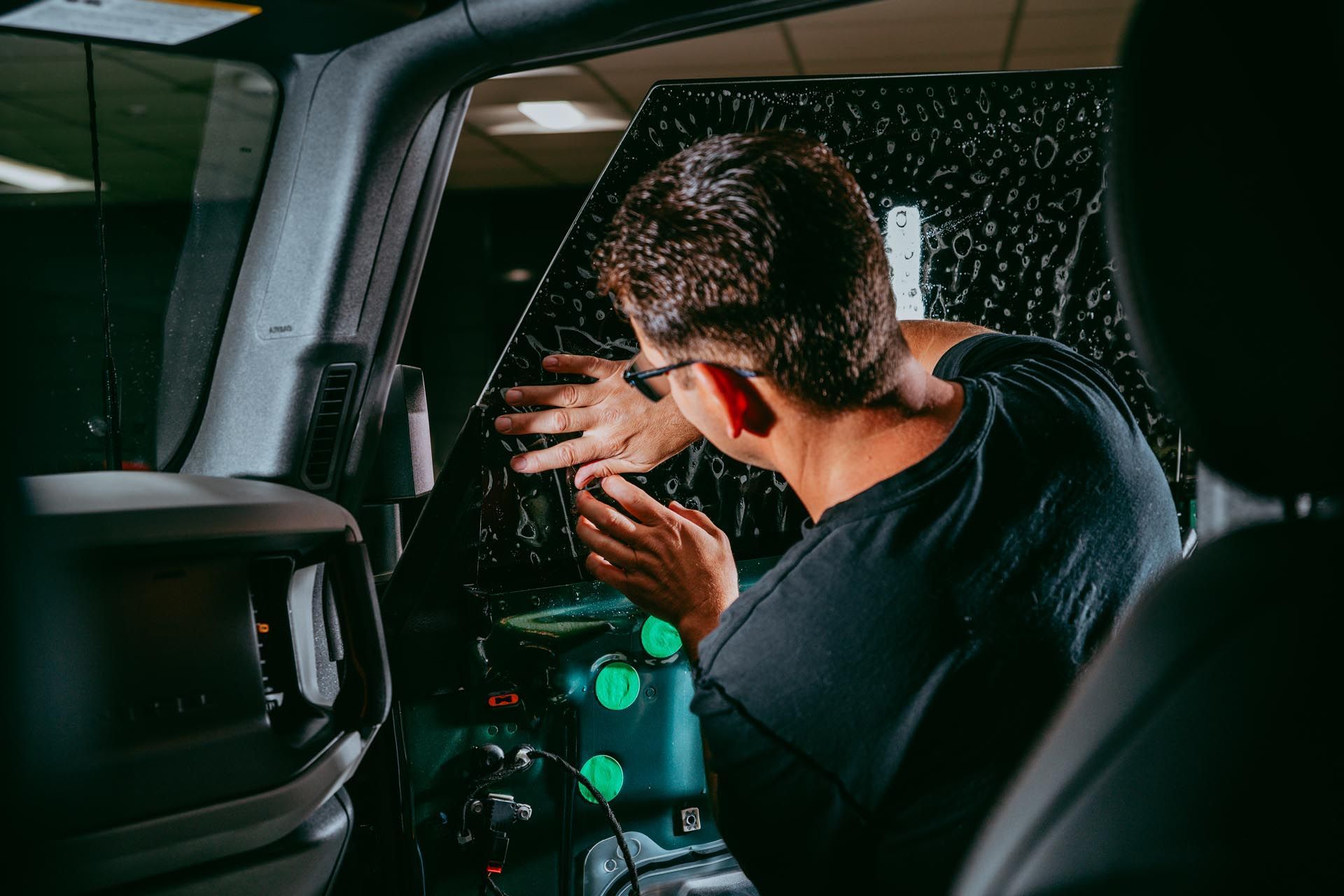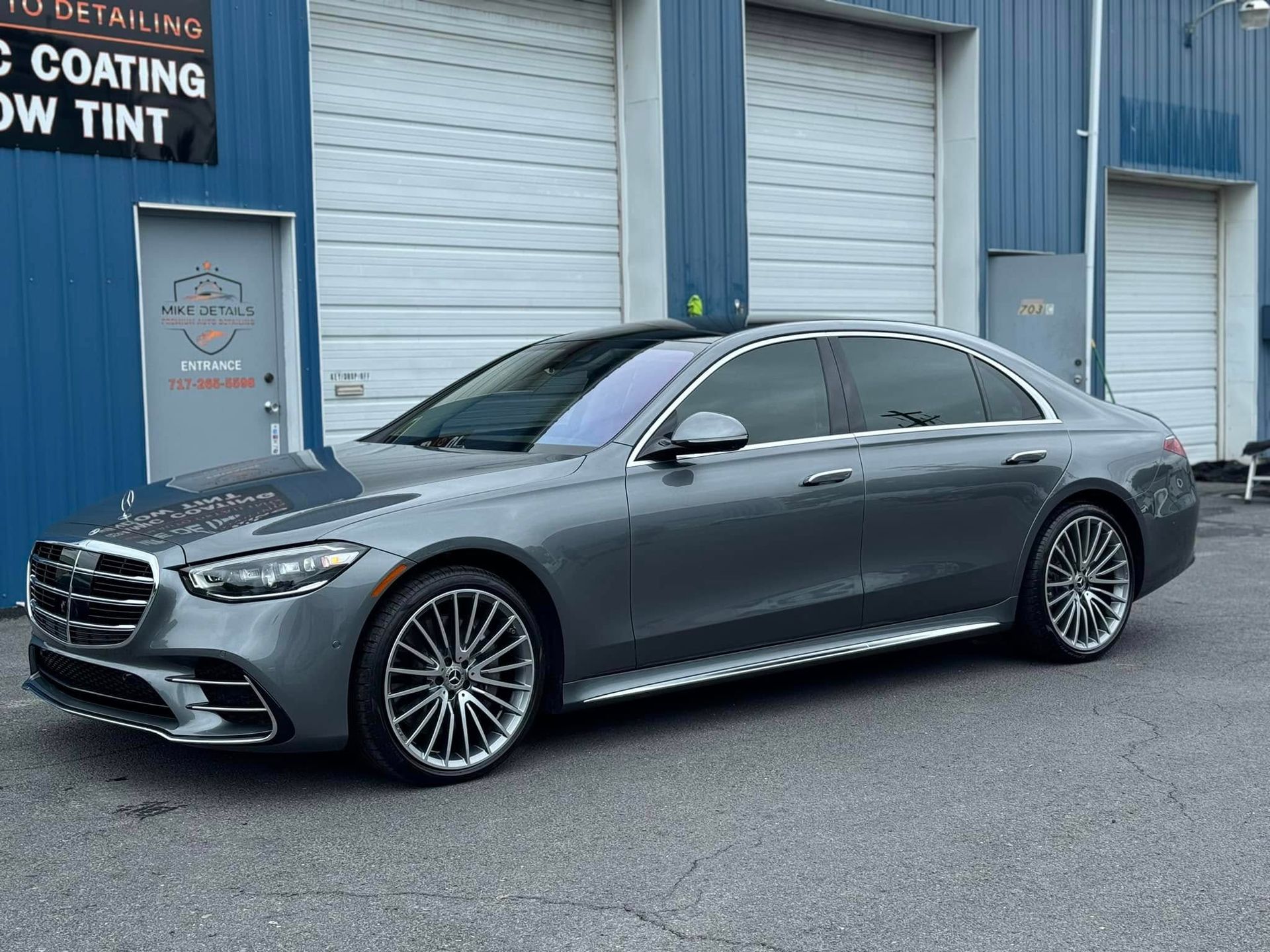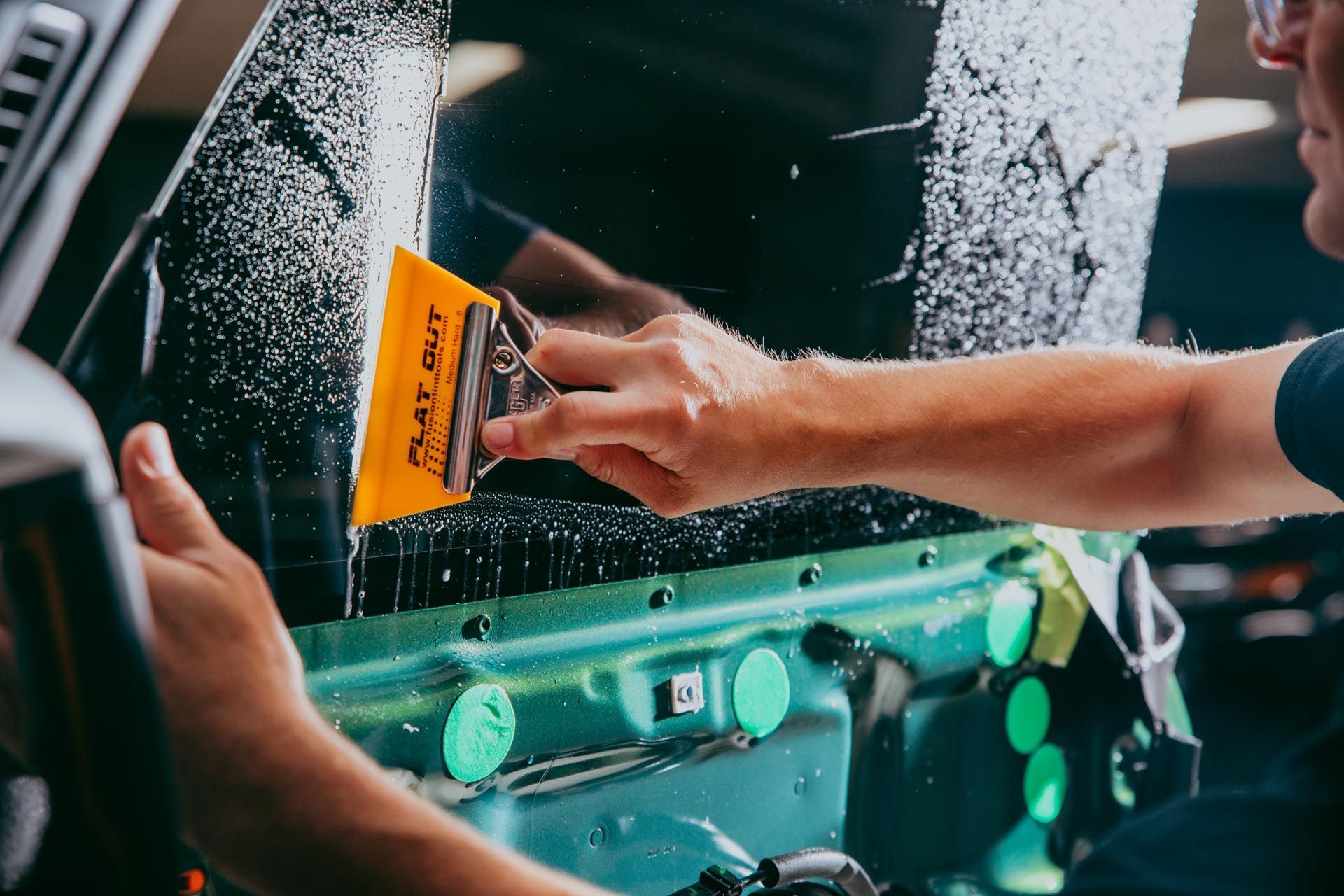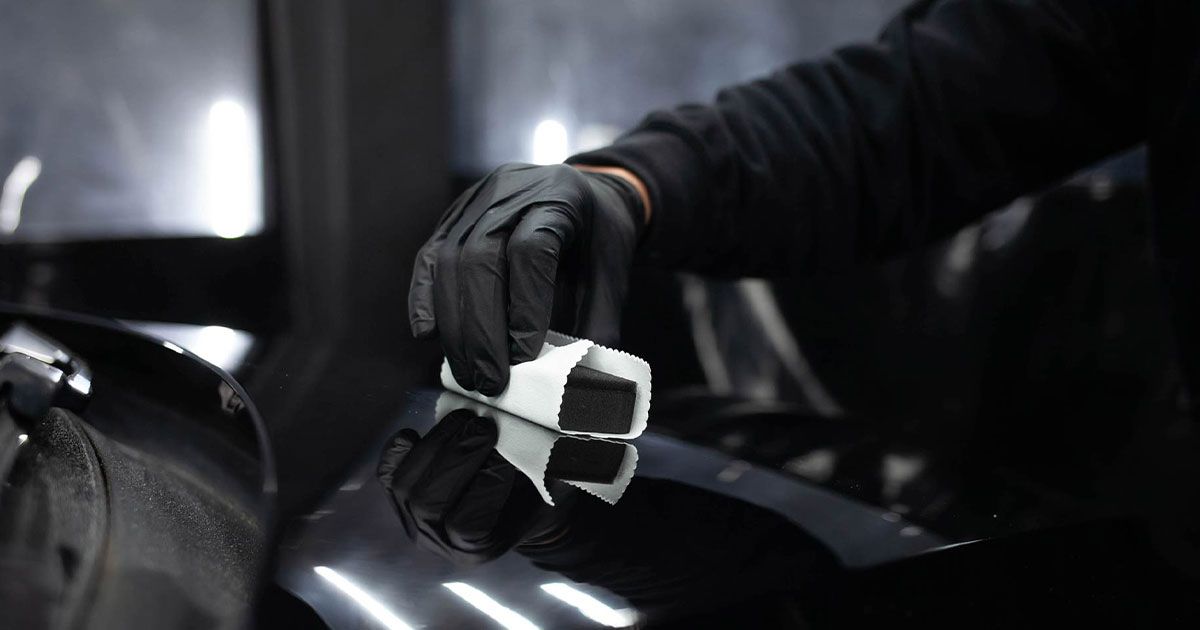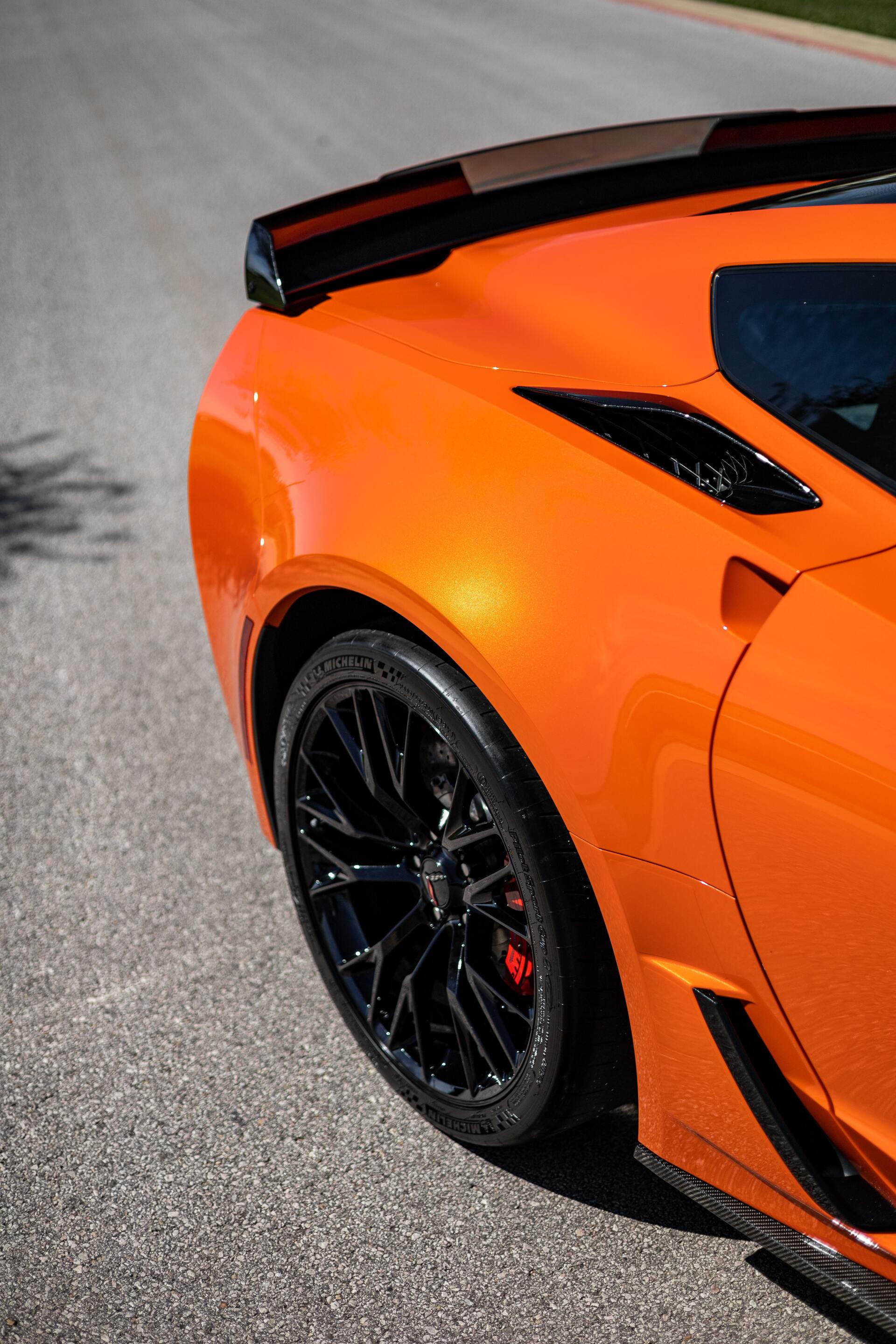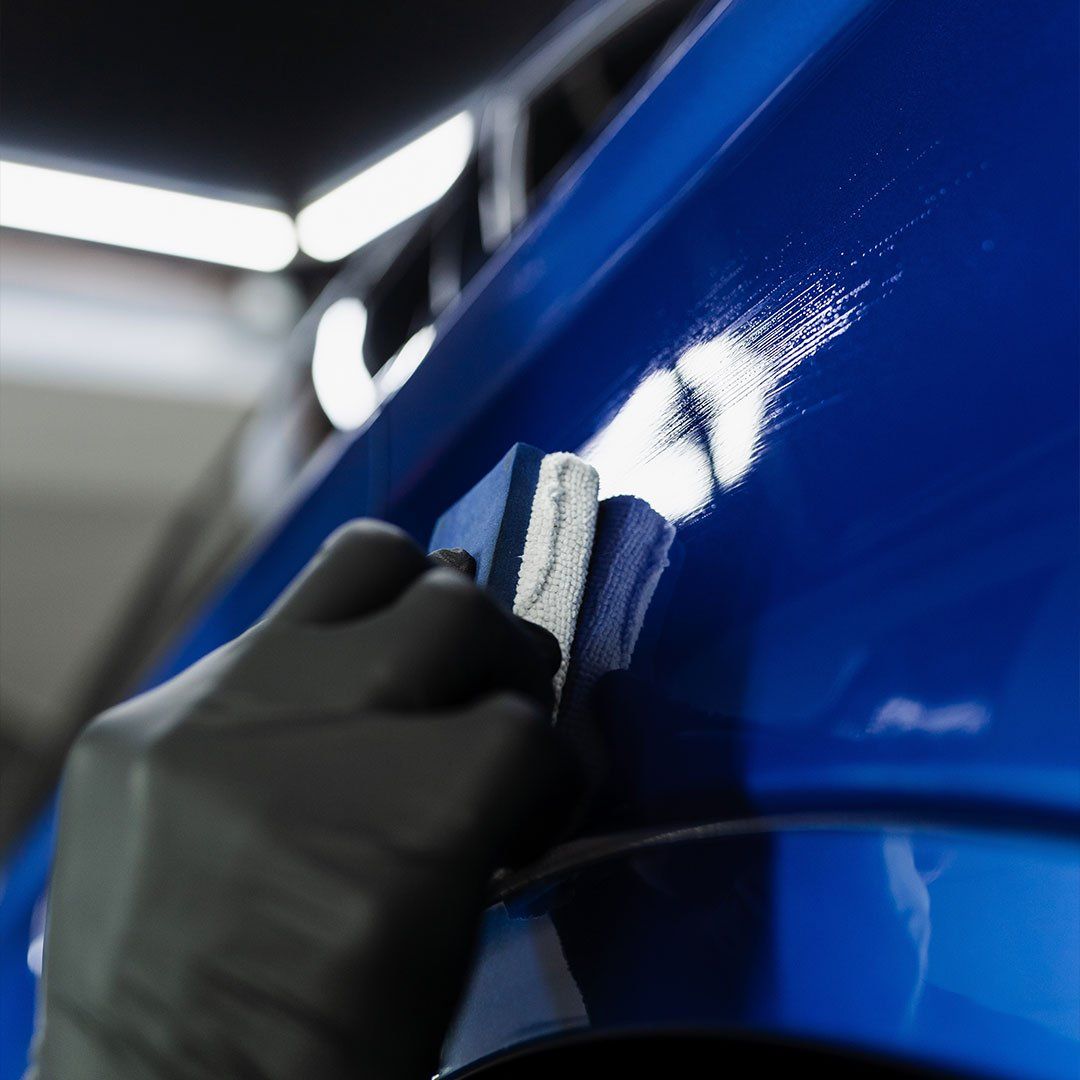How Auto Window Tinting Works: The Science of Tint Film and Its Benefits
CALL (717) 265-5598
Auto window tinting might sound like a luxury, but it’s more about smart choices and practical benefits. Many people don’t realize that this simple upgrade can transform not just the look of their car but also how they experience it every day. Imagine stepping into your vehicle on a sunny day; the heat can be overwhelming if your windows are clear. With the right tint, that blast of warmth turns into a comfortable, inviting space instead. Plus, window tint offers crucial protection for you and your car's interior from harmful UV rays, making it a win-win situation.
Auto window tinting works by applying a thin layer of tinted film to a vehicle's glass, which absorbs and reflects harmful ultraviolet (UV) rays while allowing non-harmful light to penetrate. This process utilizes properties such as 'sputter coating' with metal particles in the film, effectively blocking UV radiation, regulating interior temperatures, and enhancing overall comfort in the vehicle.
How Auto Window Tint Works
Auto window tint works through the application of specially designed films that adhere to the interior surfaces of car windows. This film consists of multiple layers that serve crucial purposes. The first layer absorbs light, allowing non-harmful rays to permeate your vehicle while blocking out harmful ultraviolet (UV) radiation. When you step into a car with tinted windows on a sunny day, that immediate relief from heat can be attributed to this clever engineering. Tinted films control how sunlight interacts with the interior of your vehicle. The core often includes advanced materials such as metal particles or ceramic components, which reflect and absorb sunlight efficiently. This dual-action process ensures that while some visible light enters the car, it effectively blocks out the majority of harmful rays. High-quality ceramic tints can reflect UV radiation, acting as a shield against sun damage—both to your skin and the vehicle's upholstery. Moreover, this technology operates without interfering with signals from your GPS or mobile devices.
Opting for tinted films featuring sputter coating—a technique using metallic coatings—helps enhance both UV protection and temperature regulation significantly. Diving deeper into functionality, we find that window tinting isn’t just about blocking rays; it offers superior insulation properties as well. One key advantage of window tinting is its ability to regulate interior temperatures effectively. During hotter summer months, these films minimize solar heat gain, allowing you to enter a nearly ambient space instead of a sauna-like environment. Such technology enhances comfort and reduces reliance on air conditioning, potentially leading to energy savings over time. In contrast, during winter, tinted windows help retain warmth within the cabin, creating a mutually beneficial situation regardless of the season. Standard automotive window tints block heat and UV radiation. However, when opting for premium options like ceramic window tints, this rate skyrockets to reflect more than 99% of harmful rays. Such impressive performance illustrates the value of choosing quality products and professional installation. With these insights in mind, it's clear that auto window tinting provides numerous advantages—not just aesthetically pleasing looks but functional layers that protect against the elements and sustain comfort while driving.
Layers of Window Tinting Film
A window tint film is indeed more than just a tinted piece of plastic; it’s a sophisticated assembly of multiple layers, each playing a critical role in its overall performance. These layers work together to provide protection, comfort, and aesthetics, making knowledge about them essential for any car owner considering window tinting.
- Layer Breakdown: At the core of every high-quality tint is a meticulously designed layered structure that enhances its functionality and longevity. It starts with the adhesive layer, which binds the film seamlessly with the glass. This layer isn’t an ordinary adhesive—it's engineered to withstand the test of time. A strong adhesive helps prevent bubbling or peeling that can compromise both appearance and effectiveness over time, ensuring that your investment remains intact.
- Adhesive Layer: The adhesive layer is paramount because if it fails, the entire purpose of adding a tint could be negated. Imagine driving around with a flapping film—definitely not what you want! The technology behind these adhesives is advanced enough to keep the film adhered even in extreme temperatures or moisture conditions. When professionals apply window tints, they’re ensuring durability against the elements.
- UV Protection Layer: Next comes the UV protection layer, which is crucial for shielding you from harmful ultraviolet rays. Prolonged sun exposure can lead to skin damage and interior fading in our vehicles. The UV protection layer effectively blocks these rays, safeguarding both your health and your car's interior from fading upholstery and dashboard deterioration. Such protection is particularly essential for those who live in sunnier climates where these rays are ever-present.
- Metalized/Sputtered Layer: The third layer is where the real magic happens—the metalized or sputtered layer contains microscopic metal particles that reflect heat away from the car. Often referred to as the sputter coating layer, this component significantly enhances cooling efficiency within the cabin. On hot summer days, this layer means less reliance on air conditioning and a much cooler ride upon entry into a parked vehicle—improving comfort while also adding energy savings!
Understanding these layers not only helps you make informed choices about window tint quality but also highlights their specific benefits.
Types of Tint: Custom vs. Standard
Tint films come in various types, tailored to meet different needs, offering flexibility. Among these options, custom tints stand out due to their specific design for a vehicle's make and model. This ensures a precise fit every time, providing a sleek look and optimal performance. Car enthusiasts often prefer custom tints because they can be designed to match factory specifications, giving the vehicle a professional appearance that complements its overall design. While these films are high-quality and functional, they usually come with a higher price tag. For those who value precision and aesthetics, custom tints can be considered a worthy investment. However, not everyone may require such tailored features or have the budget for them. On the other hand, standard tints are more affordable and accessible to a wider audience. These films offer general sizes that fit most vehicles but may need minor adjustments during installation to ensure they are applied seamlessly. Standard tints are perfect for budget-conscious consumers who still want the benefits of UV protection and aesthetic enhancement; they serve as an effective alternative without compromising too much on quality.
With prices typically lower than custom tints—often ranging from $100 to $300 for full vehicle installation—the standard option provides a smart choice for many drivers while delivering noticeable savings. One key aspect that makes standard tints appealing is their availability in various shades and styles. Although they may not offer the exact specifications of custom tints, standard options usually come in percentages of visible light transmission (VLT). This feature allows users to choose how much light comes through their windows. For instance, a 35% VLT means only 35% of light can pass through the film, resulting in a darker tint that enhances privacy while still providing comfort from the sun's glare. It’s essential to weigh these options based on factors like budget and personal preferences while considering their long-term benefits. Whether you choose custom or standard tinting depends on your unique needs and how you envision your car’s style alongside its performance. Both types have their merits and effectively reduce heat and block harmful UV rays. Understanding their differences will empower you to make an informed decision that fits your lifestyle and budget.
Advantages of Window Tinting
One of the most compelling reasons to invest in auto window tinting is the protection and comfort it offers. By deploying a tinted film, drivers can effectively shield themselves from harmful UV rays that can lead to skin damage over time. Many users report significant improvement in driving comfort post-installation. Not only does tinting provide a barrier against UV rays, but it also helps regulate the overall temperature within the cabin, making those scorching summer days far more bearable. But let’s not overlook another crucial aspect: safety and security. Tinted windows aren’t just about aesthetics or comfort; they serve essential safety functions as well. In the unfortunate event of an accident, tinted window films help hold shattered glass together. This simple yet effective feature reduces the risk of injury from flying glass shards, safeguarding both the driver and passengers. Additionally, these films offer a layer of privacy; it becomes considerably harder for potential thieves to gauge what valuables may be left inside the car, thereby acting as a deterrent against break-ins.
Now, consider the energy efficiency advantages brought about by window tinting. Studies have shown that properly installed tinted windows can reduce solar heat gain by up to 60%. This figure translates into less reliance on air conditioning systems, which means lower fuel costs and a smaller environmental footprint. Imagine stepping into your car and finding it noticeably cooler without having to blast the AC right away; it makes every drive more pleasant while contributing positively to your overall energy consumption.
Innovations in Tint Technology
Recent advancements in tint technology have radically transformed the industry, offering enhanced functionality. At the forefront of these innovations is nanotechnology, a groundbreaking approach that changes how window tints are designed. Nano-ceramic tints incorporate microscopic particles that improve heat rejection while maintaining high visibility. This means you can enjoy a cooler ride during scorching summer days without interference in electronic signal transmissions—a problem often associated with traditional metalized tints. In essence, you're getting not just aesthetics but performance upgrades.
Smart Tint
The evolution of electrochromic films, commonly referred to as smart tints, provides an exhilarating glimpse into the future of window treatment. Imagine being able to adjust the darkness of your windows at the simple touch of a button! This technology is not just about convenience; it allows drivers to customize their comfort based on their surroundings. While these films can change automatically in response to lighting conditions, they still navigate consumer awareness and access, making it a fascinating area for growth.
UV-reflective Coatings
Certain high-end tints offer advanced coatings capable of reflecting nearly 100% of ultraviolet rays. This feature is critical for promoting health and well-being since prolonged UV exposure can lead to skin damage and increase cancer risk. By investing in such tints, consumers enhance privacy while providing unrivaled protection for themselves and their passengers. Considering that most people spend considerable time in their vehicles, having this additional layer of defense becomes paramount.
Tips for Effective Tint Installation
Proper installation is essential not just for aesthetics but also for maximizing the benefits of window tinting. The first tip involves temperature control. Ideally, you should install your tints in an environment where the temperature hovers between 50 and 80 degrees Fahrenheit. This range is important because extreme temperatures can affect the adhesive properties, either making it too sticky or preventing it from bonding properly at all. So, if you're working in a garage during winter, consider using some space heaters or waiting for a warmer day. The next critical step is to clean your windows thoroughly. It's tempting to skip this part and think a quick wipe will do, but meticulous cleaning is key. Use a glass cleaner along with a lint-free cloth to remove dust, dirt, and grease. Any leftover particles can quickly create unsightly bubbles beneath the film, ruining the whole look and effectiveness. Spending enough time on this prep work will save you frustration later.
Once your windows are clean and the temperature is just right, consider whether you'll tackle this project yourself or seek professional help. DIY kits may offer lower upfront costs, but they often come at a price in terms of quality. If you're inexperienced or want perfect results that come with a guarantee, opting for professional installation is worth every penny. Professionals typically know how to handle different types of vehicles and window shapes effectively, enhancing both longevity and efficiency. Just imagine—the comfort of knowing you’ll have high-quality installation with warranties that protect your investment! Each option has its strengths, so weigh them carefully based on your skill level and desires. Professional installers typically provide extensive warranties that cover any potential mistakes made during installation—something DIY projects rarely offer.
Ultimately, whichever path you choose—DIY or professional—remember that careful preparation and attention to detail will reap significant benefits in both appearance and protection for your vehicle. Investing in proper installation ensures that your window tints perform optimally while enhancing the aesthetics of your car.
Expert Window Tinting in Mechanicsburg, PA
Ready to experience driving in a whole new light? At Mike Details, we offer top-tier auto window tinting services in Mechanicsburg, PA, designed for both comfort and style. Our professional tint installations not only enhance your vehicle’s appearance but also provide lasting protection from UV rays, heat, and glare. Whether you're after a sleek, clean look or greater privacy on the road, our expert team ensures precision results with high-performance films. Schedule your tinting appointment today and enjoy cooler rides and clearer views—backed by unmatched local craftsmanship!

